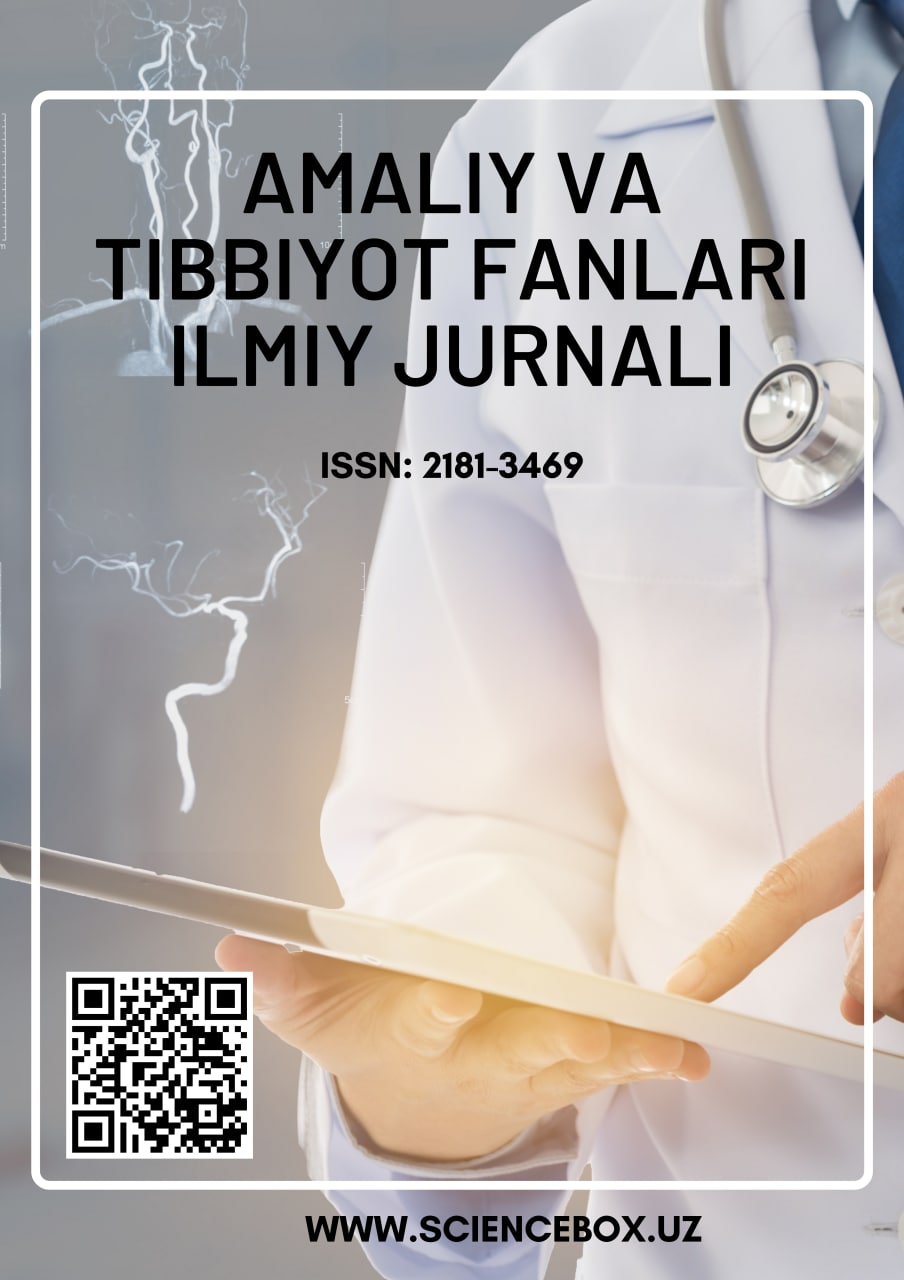МОЧЕВАЯ КИСЛОТА И КАРДИОРЕНАЛЬНЫЕ ЭФФЕКТЫ ИНГИБИТОРОВ SGLT2
Keywords:
сердце, подагра, ожирение, почкиAbstract
Было показано, что ингибиторы натрий/глюкозного котранспортера-2 (SGLT2), которые снижают уровень глюкозы в крови за счет увеличения выведения глюкозы почками, снижают риск неблагоприятных сердечно-сосудистых (СС) и почечных событий при диабете 2 типа. Частично это объясняется гемодинамическими изменениями, снижением массы тела и некоторыми возможными эффектами на функции миокарда, эндотелия и канальцев-клубочков, а также снижением глюкотоксичности. В этом обзоре оцениваются доказательства того, что эффект ингибиторов SGLT2 по снижению мочевой кислоты может также способствовать снижению кардиоренального риска.
References
Tahrani AA, Barnett AH, Bailey CJ. SGLT inhibitors in management of diabetes. Lancet Diabetes Endocrinol. 2013; 1:140-151.
Mudaliar S, Polidori D, Zambrowicz B, Henry RR. Sodium–glucose cotransporter inhibitors: effects on renal and intestinal glucose transport. From bench to bedside. Diabetes Care. 2015; 38:2344-2353.
Bailey CJ, Marx N. Cardiovascular protection in type 2 diabetes: insights from recent outcome trials. Diabetes Obes Metab. 2018; 21:3- 14. https://doi.org/10.1111/dom.13492 [Epub ahead of print].
Zinman B, Wanner C, Lachin JM, et al. Empagliflozin, cardiovascular outcomes, and mortality in type 2 diabetes. N Engl J Med. 2015;373: 2117-2128.
Wanner C, Inzucchi SE, Lachin JM, et al. Empagliflozin and progression of kidney disease in type 2 diabetes. N Engl J Med. 2016; 375:323-334.
Neal B, Perkovic V, Mahaffey KW, et al. Canagliflozin and cardiovascular and renal events in type 2 diabetes. N Engl J Med. 2017; 377:644-657.
Wiviott SD, Raz I, Bonaca MP, et al. Dapagliflozin and cardiovascular outcomes in type 2 diabetes. N Engl J Med. 2018; 380:347-357. https://doi.org/10.1056/NEJMoa1812389 [Epub ahead of print].
Kosiborod M, Cavender MA, Fu AZ, et al. Lower risk of heart failure and death in patients initiated on SGLT-2 inhibitors versus other glucose- lowering drugs: the CVD-REAL study. Circulation. 2018; 138:249-259.
Nadkarni GN, Ferrandino R, Chang A, et al. Acute kidney injury in patients on SGLT2 inhibitors: a propensity-matched analysis. Diabe- tes Care. 2017; 40:1479-1485.
Sattar N, McLaren J, Kristensen SL, Preiss D, McMurray JJ. SGLT2 inhibition and cardiovascular events: why did EMPA-REG outcomes surprise and what were the likely mechanisms? Diabetologia. 2016; 59:1333-1339.
Marx N, McGuire DK. Sodium-glucose cotransporter-2 inhibition for the reduction of cardiovascular events in high-risk patients with dia- betes mellitus. Eur Heart J. 2016; 37:3192-3200.
Verma S, McMurray JJ, Cherney DZ. The metabolodiuretic promise of sodium-dependent glucose cotransporter 2 inhibition: the search for the sweet spot in heart failure. JAMA Cardiol. 2017; 2:939-940.
Ferrannini E, Muscelli E, Frascerra S, et al. Metabolic response to sodium-glucose cotransporter 2 inhibition in type 2 diabetic patients. J Clin Invest. 2014; 124:499-508.
Striepe K, Jumar A, Ott C, et al. Effects of the selective sodium- glucose cotransporter 2 inhibitor empagliflozin on vascular function and central hemodynamics in patients with type 2 diabetes mellitus. Circulation. 2017; 136:1167-1169.
Heerspink HJ, Perkins BA, Fitchett DH, Husain M, Cherney DZ.Sodium glucose cotransporter 2 inhibitors in the treatment of diabe- tes mellitus: cardiovascular and kidney effects, potential mechanisms, and clinical applications. Circulation. 2016; 134:752-772.
Heerspink HJL, Kosiborod M, Inzucchi SE, Cherney DZI. Renoprotec- tive effects of sodium-glucose cotransporter-2 inhibitors. Kidney Int. 2018; 94:26-39.
Rosenstock J, Ferrannini E. Euglycemic diabetic ketoacidosis: a pre- dictable, detectable, and preventable safety concern with SGLT2 inhibitors. Diabetes Care. 2015; 38:1638-1642.
Kappel BA, Lehrke M, Schutt K, et al. Effect of empagliflozin on the metabolic signature of patients with type 2 diabetes mellitus and car- diovascular disease. Circulation. 2017;1 36:969-972. 19. Li T, Zhang Z, Kolwicz SC, et al. Defective branched-chain amino acid catabolism disrupts glucose metabolism and sensitizes the heart to ischemia-reperfusion injury. Cell Metab. 2017; 25:374-385.
Sun H, Olson KC, Gao C, et al. Catabolic defect of branched-chain amino acids promotes heart failure. Circulation. 2016; 133:2038-2049.
Bertero E, Prates Roma L, Ameri P, Maack C. Cardiac effects of SGLT2 inhibitors: the sodium hypothesis. Cardiovasc Res. 2018;114: 12-18.
Solini A, Sebastiani G, Nigi L, Santini E, Rossi C, Dotta F. Dapagliflozin modulates glucagon secretion in an SGLT2-independent manner in murine alpha cells. Diabetes Metab. 2017; 43:512-520.
Maiuolo J, Oppedisano F, Gratteri S, Muscoli C, Mollace V. Regula- tion of uric acid metabolism and excretion. Int J Cardiol. 2016;213: 8-14.
Mandal AK, Mount DB. The molecular physiology of uric acid homeostasis. Annu Rev Physiol. 2016; 77:323-345.
Reaven GM. The kidney: an unwilling accomplice in syndrome X.Am J Kidney Dis. 1997;30:928-931.
Kanbay M, Jensen T, Solak Y, et al. Uric acid in metabolic syndrome: from an innocent bystander to a central player. Eur J Intern Med. 2016; 29:3-8.
Yuan H, Yu C, Li X, et al. Serum uric acid levels and risk of metabolic syndrome: a dose-response meta-analysis of prospective studies.
J Clin Endocrinol Metab. 2015; 100:4198-4207.
Zoppini G, Targher G, Chonchol M, et al. Serum uric acid levels and incident chronic kidney disease in patients with type 2 diabetes and preserved kidney function. Diabetes Care. 2012; 35:99-104.
Tsai CW, Lin SY, Kuo CC, Huang CC. Serum uric acid and progression of kidney disease: a longitudinal analysis and mini-review. PLoS One. 2017; 12:e0170393.
Kim IY, Lee DW, Lee SB, Kwak S. The role of uric acid in kidney fibro- sis: experimental evidences for the causal relationship. BioMed Res Int. 2014. https://doi.org/10.1155/2014/638732. 31. Yoo TW, Sung KC, Shin HS, et al. Relationship between serum uric acid concentration and insulin resistance and metabolic syndrome.
Circ J. 2005;69:928-933. 32. Zhu Y, Hu Y, Huang T, et al. High uric acid directly inhibits insulin sig- nalling and induces insulin resistance. Biochem Biophys Res Comm. 2014; 447:707-714.
Kodama S, Saito K, Yachi Y, et al. Association between serum uric acid and development of type 2 diabetes. Diabetes Care. 2009;32: 1737-1742.
Bhole V, Choi JW, Kim SW, de Vera M, Choi H. Serum uric acid levels and the risk of type 2 diabetes: a prospective study. Am J Med. 2010; 123:957-961.
Lv Q, Meng XF, He FF, et al. High serum uric acid and increased risk of type 2 diabetes: a systemic review and meta-analysis of prospec- tive cohort studies. PLoS One. 2013; 8:e56864.
Wijnands JM, van Durme CM, Driessen JH, et al. Individuals with type 2 diabetes mellitus are at an increased risk of gout but this is not due to diabetes. A population-based Cohort study. Medicine. 2015; 94:e1358.
Zhao Y, Xu L, Tian D, et al. Effects of sodium-glucose co-transporter 2 (SGLT2) inhibitors on serum uric acid level: a meta-analysis of ran- domized controlled trials. Diabetes Obes Metab. 2018; 20:458-462.
Chino Y, Samukawa Y, Sakai S, et al. SGLT2 inhibitor lowers serum uric acid through alteration of uric acid transport activity in renal tubule by increased glycosuria. Biopharm Drug Dis. 2014; 35:391-404.





















